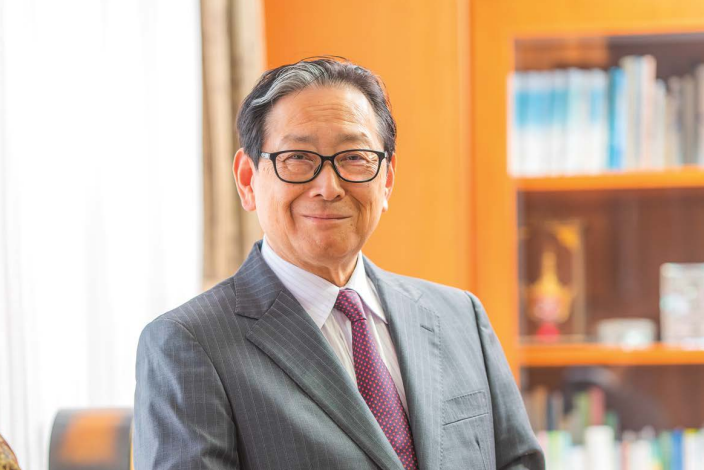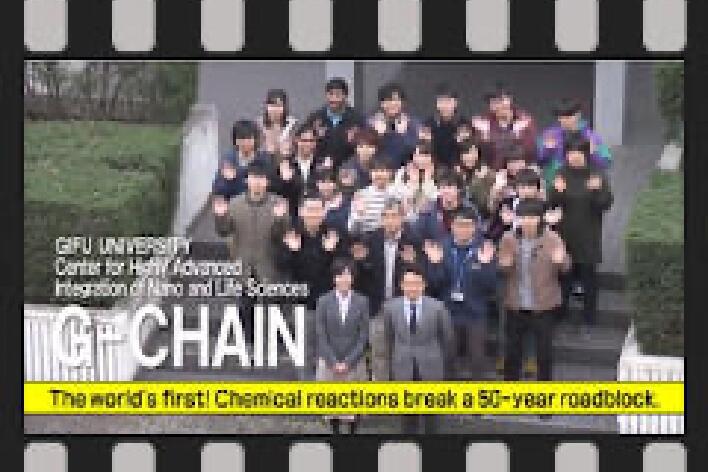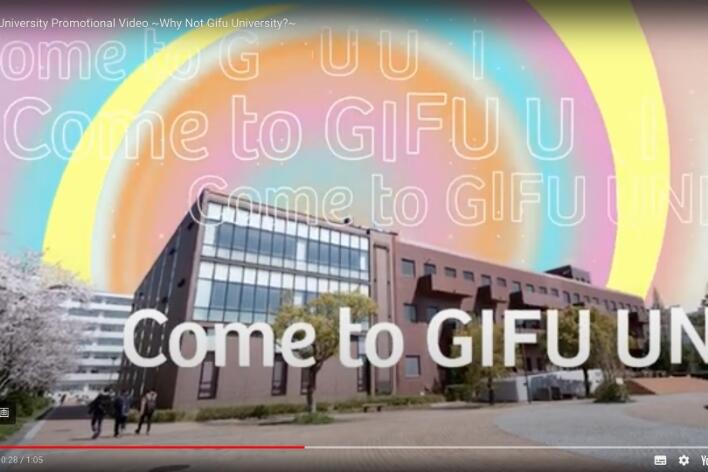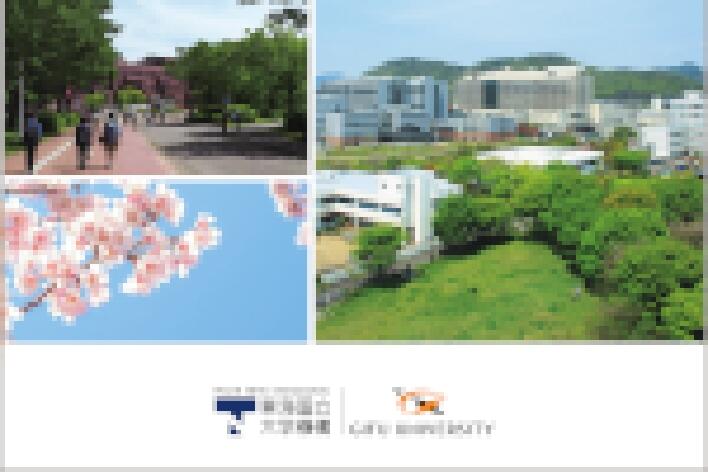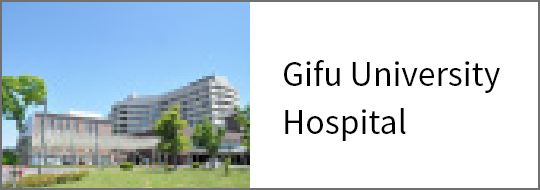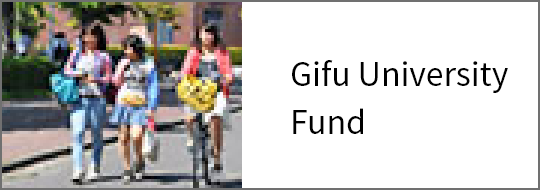Coaching on training methods using a combination of scientific and practical knowledge gained through research. The aim is for athlete AKAMATSU Ryoichi to secure a medal at the 2024 Paris Olympics.
*Information related to faculty members/students and graduate schools at Gifu University here are all that of the time of interviewing.
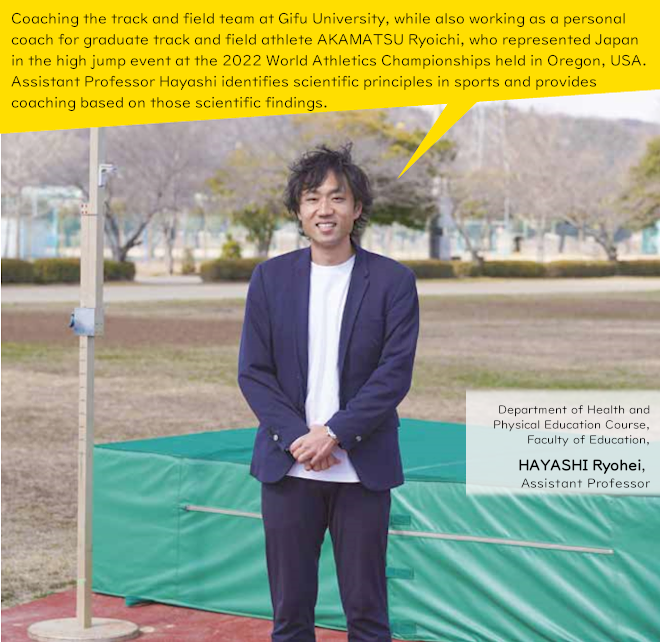
Practical knowledge of the athlete, coaching expertise, and scientific data are important!
My area of expertise is coaching and training in track and field. To achieve success in competitions, it is vital to set a target and conduct training with a problem-solving mindset. It is also important to possess scientific knowledge of the effects of training and load characteristics on an athlete's body. My research involves clarifying scientific knowledge of biomechanics techniques used to measure biomechanical data on physical activity.
For example, when training the gluteus medius, if you lift a single leg off the ground while standing, a muscle on the contralateral buttocks of the supporting lower limb tightens. This muscle is the gluteus medius. In the approach run and take-off part of the high jump, the athlete take-off with a single leg; therefore, the gluteus medius muscle plays an important role in this process. I felt that it may be necessary for training to match the sports movement of the high jump. Therefore, I collected data from many athletes whom I asked to perform specific types of training, including weight training where the athlete would lift a barbell from the floor to chest level while standing on single-leg, as well as single-leg jumping training. Using the data obtained, I confirmed that there is a link between muscle activity during the high jump and the muscles during the training. Lifting a barbell while standing on single-leg makes the athlete's posture unstable; however, the approach run and jumping part of the high jump also involves a series of unstable postures. I believe that training the gluteus medius will result in increased postural stability.
by combining practical knowledge and scientific knowledge
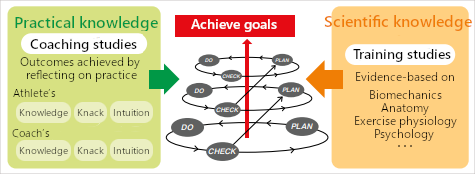
* Heavy loading on the athlete; therefore, training is performed under
the supervision of an expert.

Training in which the athlete drops to the floor from a high platform and then
immediately jumps vertically. The research revealed that athletes viewing a
jumping video where they executed a highly confident performance, before
jumping off the platform, improved the athlete's state of mind, and resulted
in better performance due to the increased power exerted by the lower body.
Relying solely on scientific knowledge can lead to injury; therefore, using a combination of scientific and practical knowledge is important. Practical knowledge refers to empirical knowledge. For a high jumper, this refers to the sensory experience of the approach run and high jump, while for the coach this refers to the understanding of the sounds of the athlete at take-off from the ground, and the strengths and weaknesses of the athlete's movement during the approach run.
I am also conducting research to clarify the effect of training gained from practical knowledge as well as scientific knowledge. A type of training called drop-jump training, where the athlete drops from a height and then immediately jumps up vertically, has long been used in high jump training to ensure that the athletes can exert a huge amount of power during take-off for the high jump; however, the effectiveness of this training was scientifically unknown. The result of my research has revealed that drop jump training from a height of 2.0 m or more increased the power exerted from the knee joint and hip joint in international-level athletes.
I want to share the results of my research not only with athletes but also with children and older people.

When I was a student, I competed as a track and field athlete in the triple jump and long jump events. I majored in coaching studies in graduate school with the aim of becoming a coach. I learned from my teacher at the time, that when coaching athletes, it is important to adopt a stance that prioritizes both scientific and practical knowledge. I prescribe research results to athletes as training methods, and collect and analyze data on competition and training. However, sporting performance is an entanglement of several elements, and different training methods are suitable for different athletes; hence, there really is no correct answer. I simply coach the athletes on physical training that will serve as a foundation to enable the athlete to fully exert their own individuality; thereafter, I try to respect the wishes of the athlete.
Akamatsu is an athlete who has won many competitions while he was a student, and represented Japan team at the 2022 Oregon World Athletics Championships. He achieved victory in his event at the 106th Japan Indoor Meet in February 2023, setting a new competition record of 2.27 m. He holds his own personal best record of 2.28 m. With the help of crowdfunding, I was able to accompany the athletes to the meet, and felt a strong sense of purpose to respond to the support of so many people.
The World Athletics Championships in Budapest in August 2023, and the Paris Olympics in 2024 are the next events. We are currently working assiduously to ensure that Akamatsu finishes in the top eight in both competitions. We are collecting competition data to work on improving the stability of the approach run and take-off techniques. However, many expensive cameras are needed to monitor the approach run speed of the high jump, as the athlete runs in a large arc in front of the bar in the high jump. Raising funds is an issue; therefore, I would also be extremely grateful to the engineering faculty members and students if they could contribute their expertise and come up with innovative ideas to meet our needs.
My research is not limited to athletes. At public lectures for children, I am involved in encouraging interest in physics and mathematics through sports by asking children questions on familiar topics, such as "How long is Usain Bolt's stride when he runs? How fast does he run?" I also want to apply the training techniques we use for top athletes to enable older people to walk safely. To this end, I have started joint research with a hospital. I would like to give back to society through the scientific knowledge I have gained through my research.
